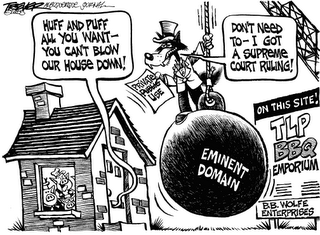
From The Baltimore Sun:
Once an expensive last resort for elderly homeowners struggling for financial survival, reverse mortgages are now being sold as retirement planning tools for affluent people.
Despite a softening housing market, mortgage brokers say homeowners are using them to tap into their equity to invest in stocks, upgrade their living quarters or simply pay expenses in lieu of dipping into their retirement accounts too heavily.
Federally insured reverse mortgages grew a stunning 77 percent in the fiscal year that ended Sept. 30 compared with fiscal 2005, according to the National Reverse Mortgage Lenders Association. That's 76,351 home equity conversion mortgages, which are available to homeowners 62 and older.
As the name implies, a reverse mortgage is a loan that allows homeowners to use their equity to create a lump sum of cash, a stream of monthly payments, a line of credit, or some combination of all three.
"Over the next year we're going to see better pricing on federally insured and private loans, so if you can wait, do it," said Ken Scholen, a reverse mortgage expert with AARP.
Reverse mortgages can be an expensive way to tap equity, but some of the newer products allow more flexibility in payment streams and higher loan amounts.
"It's really a changing marketplace. A year from now, the industry will be very different," said Peter Bell, president of the reverse-mortgage lenders association....
"Competition is going to be terrific for this business," said Tom Kelly, author of The New Reverse Mortgage Formula: How to Convert Home Equity into Tax-Free Income.
"Traditionally, this was only for people in desperate situations who were deciding between eating and taking their medications," Kelly said.
With the new products for higher-end homes, however, seniors are thinking about tapping only a portion of that equity. They can take out a reverse mortgage for a portion of the equity, then let market appreciation take care of bringing back the heirs' value over time.
As with all reverse mortgages, remember to study the contract details before jumping in, experts said, because there may be lower-cost and better options for tapping cash.
Mortgage counseling must be provided to all reverse-mortgage shoppers in the federal programs, and counselors in the coming year will be equipped to evaluate how new private loan offers measure up to the federal program, AARP's Scholen said.
Finally, be sure to look at selling your home and compare that with the reverse mortgage fees and interest rates.





















